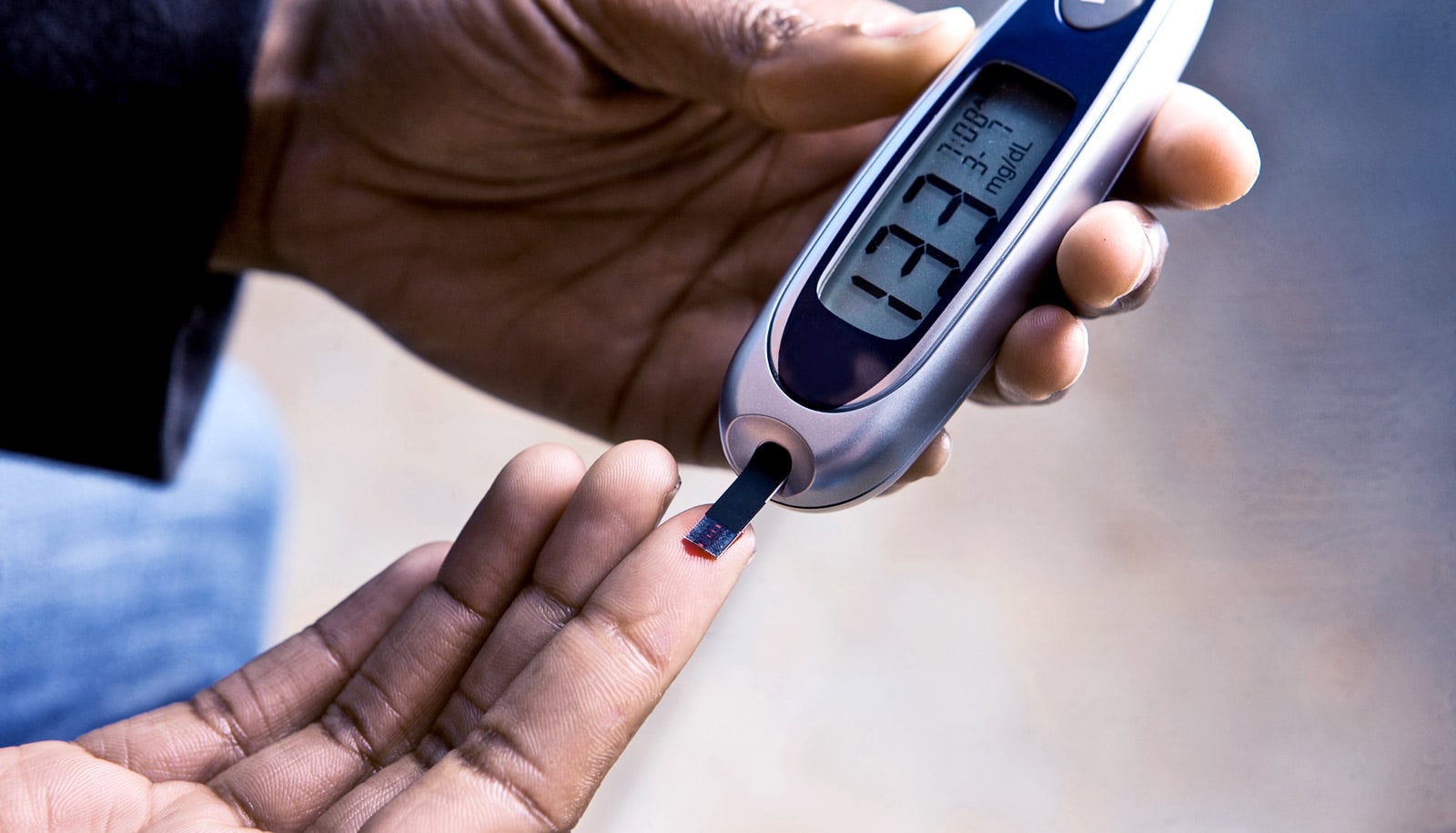Black and white people have the same risk of developing diabetes when all biological factors for the disease are considered over time, according to a new study.
“Obesity is driving these differences…”
The finding flips long-held beliefs that there is an unexplained or genetic reason why blacks have double the rate of diabetes compared to whites by midlife, which is considered early onset.
“Obesity is driving these differences,” says senior study author Mercedes Carnethon, associate professor of preventive medicine at Northwestern University’s Feinberg School of Medicine. “The findings surprised us, because for the past 20 years there was a narrative that there must be something we haven’t found that was causing this higher rate.”
Previous studies have found higher rates of diabetes in blacks are still present even when risk factors for diabetes such as obesity and lower socioeconomic status are taken into account.
But this study, for the first time, identified a combination of modifiable risk factors over time—body mass index, fat around the abdomen, fasting glucose levels, lipids, blood pressure, and lung function—that drive the higher rate of diabetes. When researchers factored all of these out, they found no disparities between black and white men or women.
Before the authors accounted for the differences in risk factors, black women had nearly three times the risk for developing diabetes as white women.
“Blacks gained more weight over time,” Carnethon says. “It was the accumulation of this and other risk factors that eliminated the so-called mysterious cause of the disparity.”
In previous studies, researchers measured such health behaviors as obesity, physical activity, and diet once during their study participants’ lives. But these factors can change over time, and how much they change may be different in each race group. For example, a white woman and a black woman may be the same weight at age 35—but if that black woman gains more weight over the next 15 years, her risk for developing diabetes goes up.
The study measured these changes in her weight over time, along with changes in other related health behaviors and health risk factors. When scientists accounted for these changes in risk factors for diabetes, they did not observe race differences in the development of diabetes.
The findings are particularly important because the incidence of diabetes is rising in black youth ages 10 to 19 years old. Another recent study showed from 2002 to 2012 the incidence of diabetes remained fairly stable for non-Hispanic white youth (ages 10-19) but increased annually by more than 6 percent for non-Hispanic black youth.
The study is the first to identify a combination of risk factors that drive a higher rate of diabetes among blacks, upending long-held beliefs about why the discrepancy exists.
Lots of red meat and poultry linked to diabetes risk
There is no easy fix for the problem, which is driven by a combination of biological, neighborhood, psychosocial, socioeconomic, and behavioral factors, the authors say.
“To eliminate the higher rate of diabetes, everybody needs to have access to healthy foods, safe spaces for physical activity, and equal economic opportunity to have enough money to afford these things and live in communities that offer this,” says lead study author Michael Bancks, a postdoctoral fellow in preventive medicine.
“If we could wave a magic wand and get rid of risk factors, then we could eliminate the disparity. But we can’t do that.”
Changing risk behaviors in childhood and adolescence is key because that’s when risky health behaviors develop and damage begins to accumulate, Bancks says.
The research is part of the observational cohort Coronary Artery Risk Development in Young Adults (CARDIA) Study. CARDIA was started in 1985-1986, enrolling 5,115 black and white men and women who were 18 to 30 years of age from Birmingham, Alabama; Oakland, California; Minneapolis; and Chicago.
The new study sample included 4,251 individuals from the original study. Researchers followed individuals through 2015 to 2016 for the development of diabetes, which was assessed at eight follow-up examinations over these 30 years using standard diagnostic criteria for diabetes.
“If we could wave a magic wand and get rid of risk factors, then we could eliminate the disparity,” Carnethon says. “But we can’t do that. Still, we now know there is no mystery to these higher rates. Our efforts to control the traditional risk factors can work to reduce the disparities we observe in diabetes incidence.”
How very low-calorie diets reverse diabetes
The researchers report their findings in the journal JAMA.
Kiarri Kershaw is also a coauthor of the paper. The National Heart, Lung, and Blood Institute (NHLBI) supports the CARDIA study. The Intramural Research Program of the National Institute on Aging (NIA) and an intra-agency agreement between NIA and NHLBI, all of the National Institutes of Health also support the CARDIA study.
Source: Northwestern University



